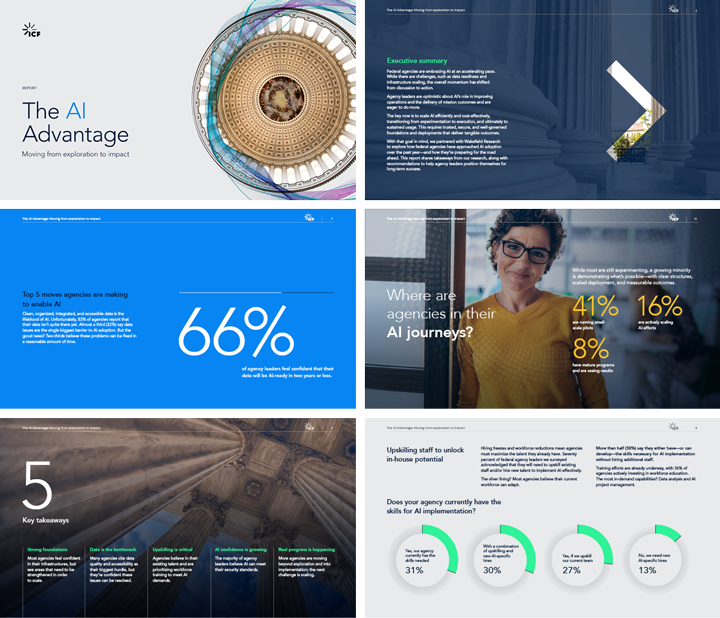
How to generate the best AI use cases—and make them a reality for your agency
To avoid being left on the sidelines by fast-developing AI, organizations should lean in but be cautious. Moving forward with the right use case and structure is key to implementing successful AI technology.
If you’re not sure how to get started with generative AI, don’t worry—you’re not alone. As more agencies consider how to incorporate this new technology, many are experiencing significant challenges deciding where to apply it.
And finding projects that are a good fit is an important step, as generative AI use requires executive leadership commitment and alignment and, without that, those moving forward with “shadow AI” can be dangerous to an organization, resulting in leakage of data or sensitive information, data privacy issues, and models without sufficient regulation. Secure, responsible use requires a group effort.
Your first step should be to prioritize dedicating a team to canvas for use cases. Ideally, your team should look for opportunities in the following three categories:
1. User experience. Audit the customer or employee journey to reveal pain points.
2. Workflow. Review business processes for ways to reduce bottlenecks or eliminate repetitive tasks.
3. Key operations. Evaluate options to streamline business functions like finance and human resources.
Once you’ve created a list of possible use cases, you’ll need to develop a framework to prioritize them, given that organizations are typically going to have hundreds of use cases to choose from.
As part of this step, you will need to ensure that the data is AI-ready. Historically, data has been a difficult aspect of the process since many organizations don’t have existing data that’s ready for AI and, unfortunately, AI is not going to fix that problem. Tackling AI projects beyond simple use cases without AI-ready data will inevitably result in a graveyard of projects due to data issues.
By finding, prioritizing, and narrowing your use case list based on AI-ready data, you will be in a strong position to take advantage of AI opportunities.
To overcome this hurdle, take an in-depth look at your data and conduct a feasibility study to make sure it’s ready for AI. Your use case may seem perfect but, if the data doesn’t support it, the models won’t work. By finding, prioritizing, and narrowing your use case list based on AI-ready data, you will be in a strong position to take advantage of AI opportunities.
The last step in determining your ideal use case is to ensure that there are clear metrics to support it. AI technology is somewhat like peanut butter—it can be easily spread around everywhere but won’t necessarily provide a lot of value. Make your choice data driven.
Armed with a priority use case list, or what Gartner calls the “most likely wins,” the next step is to create a product roadmap and seek C-level executive alignment and commitment. Compared to other technologies, AI carries some inherent risk—in potential misuse and other ethical issues—and executive-level commitment, including collaboration among the legal and data privacy teams, the chief data officer (CDO), and the chief information officer (CIO) will be key.
Leveraging this technology, with tools that are already available and integrated, is still going to be demanding work and will require change management and ongoing communication as there will be resistance. Despite the challenges, putting AI technology—that is available today—in the hands of your employees or customers will deliver a wealth of benefits that makes it well worth the investment.
